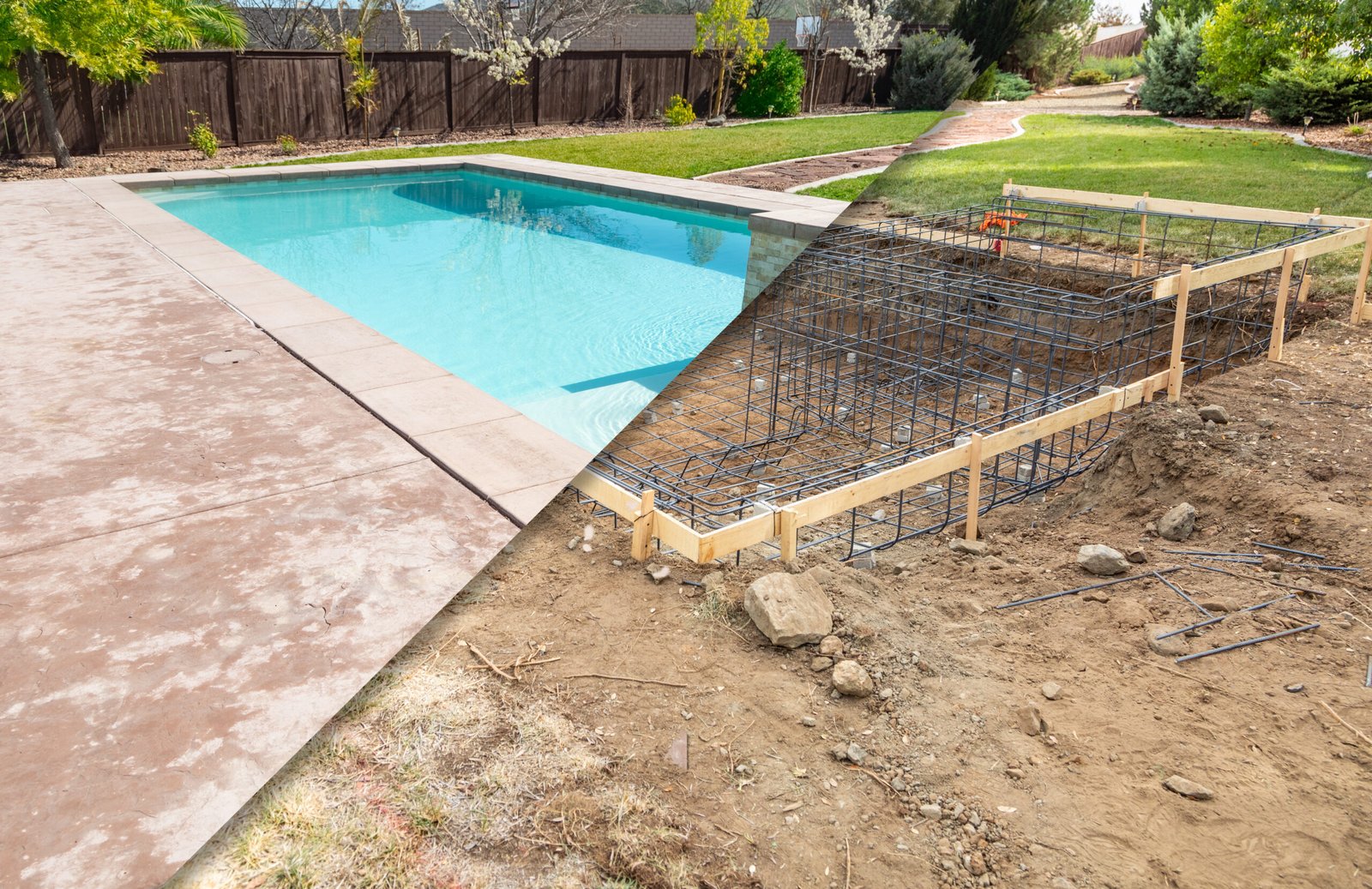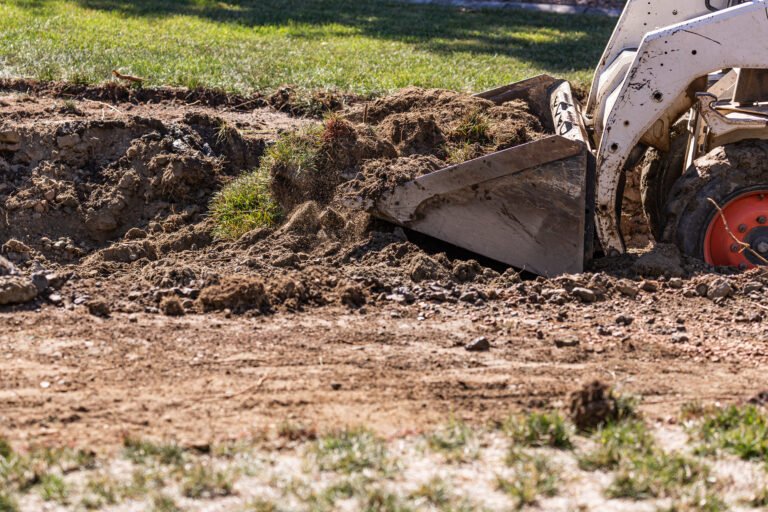Pool Demolition: Reasons and Methods Explained Clearly
Pool demolition is a process that may become necessary for various reasons, such as safety concerns, renovation plans, or property value considerations. While swimming pools can be an incredible amenity, adding value and entertainment to a property, there are times when removing one may become the best course of action. This article explores the key reasons behind pool demolition and the methods available to accomplish the task.
One of the main reasons that homeowners or property managers consider pool demolition is to address safety concerns. An unused or damaged pool may pose drowning risks, or the structural integrity of the pool may be compromised, resulting in possible injuries to its users. Furthermore, from a financial perspective, maintaining a pool can be expensive and time-consuming – a factor that may cause some property owners to reconsider their investment in a swimming pool.
Among the various pool demolition methods, there are two primary options: complete removal and partial removal. Both options come with their own unique benefits and challenges, dependent upon factors such as budget, environmental impact, and property owner objectives. The choice between the two methods will largely depend on the individual circumstances surrounding a specific pool and its property.
Understanding Pool Demolition
Reasons for Pool Removal
There are various reasons for homeowners to consider pool demolition. These may include safety concerns, high maintenance costs, or simply a desire to repurpose the space. Additionally, removing an inground pool may increase property value, as some potential buyers may view a pool as a large maintenance expense. Greater yard space also opens up possibilities for landscape design or other home improvements.
Pool Demolition Types
Pool demolition can be classified into two main types:
- Partial pool removal: In this method, the upper portion of the pool walls are removed, and holes are punched into the bottom of the pool to allow for drainage. The remaining void is then filled with compacted soil or other appropriate fill material to support any future landscaping.
- Full pool removal: This comprehensive process involves the complete removal of the pool structure, ranging from the walls to the floor. The entire site is then filled with appropriate fill material, such as soil or gravel, and compacted to provide solid ground for future use.
Each method has its own benefits, and the choice depends on factors such as budget, intended use of the space, and local regulations.
Pool Removal Permits and Safety
Before initiating any pool demolition, it’s crucial to adhere to local regulations and obtain the necessary permits from relevant authorities. The permit requirements vary from one region to another, and they ensure that the work is carried out in a safe and compliant manner while considering environmental factors.
During the demolition process, proper safety guidelines must be followed to protect both workers and property. This includes using appropriate equipment, following established safety protocols, and ensuring that utilities like gas, electric, and water lines are secured or disconnected beforehand.
In conclusion, understanding the core elements of pool demolition – from reasons for removal, various methods, and ensuring permits and safety – is essential for anyone considering this option. By selecting an appropriate method and adhering to regulations and safety guidelines, the process of pool removal can be smooth and effective, allowing homeowners to maximize the benefits and potential uses of their property.
Demolition Process and Methods
In this section, we will discuss the demolition process and methods for both inground and above ground pool removals. We will also look at the equipment and techniques commonly used in these processes.
Inground Pool Removal
Inground pool removal can be divided into two main methods: partial removal and complete pool removal.
- Partial Removal: This method involves breaking down the top 18-36 inches of the pool’s walls and placing the debris in the bottom of the pool. The remaining pool structure is then filled with dirt and compacted. This method is more cost-effective but may not be permitted in all areas due to possible ground instability issues.
- Complete Pool Removal: In this method, the entire pool structure is broken down and removed from the property. This is the most thorough method and leaves no trace of the pool behind; however, it is also more expensive.
Above Ground Pool Removal
Above ground pool removal is typically easier and more straightforward than inground pool removal. Similar to inground pools, there are two primary methods for above ground pool removal, partial demolition and complete demolition.
- Partial Demolition: The pool walls and liner are removed, leaving the base (if any) behind. This option is suitable for those planning to install another above-ground pool or landscape the area.
- Complete Demolition: The entire pool structure, including the base and support system, is removed from the property. This option is ideal for those who want to completely reclaim the area for other uses.
Equipment and Techniques
A variety of heavy equipment and tools are utilized in the pool demolition process. Some of the commonly used equipment includes:
- Excavators: These versatile machines are often used for digging, removing debris, and breaking down pool walls.
- Backhoes: Backhoes are a combination of an excavator and a loader, making them ideal for digging, lifting, and removing debris from pool demolition sites.
- Skid Steer Loaders: Skid steer loaders are compact and maneuverable, making them suitable for smaller pool removal projects and tight spaces.
- Dump Trucks: These trucks are used to transport debris and materials removed from the site during the demolition process.
- Hand Tools: In addition to heavy equipment, operators may use hand tools such as sledgehammers, jackhammers, and concrete saws to break down pool walls and remove smaller debris.
In some cases, homeowners may choose a DIY approach for above ground pool removal. It is essential to note that while this might save on costs, the process can be labor-intensive and time-consuming. It is generally recommended to consult with a professional for inground pool removal due to the complexity and risk involved.
Project Considerations
When deciding to undertake a pool demolition project, several factors should be taken into account. This section will focus on the cost factors, selecting a contractor, and preparation and aftercare.
Cost Factors
Evaluating the cost of pool removal is a crucial step in the decision-making process. The pool removal cost varies depending on factors such as:
- Type of pool (i.e., inground or above-ground)
- Size of the pool
- Location of the pool on the property
- Accessibility of the pool area for equipment
- Materials used in constructing the pool
Furthermore, a significant factor to consider when weighing the cost of pool removal is the potential increase in property value. Eliminating a high-maintenance or unwanted pool can make the property more appealing to buyers. Additionally, the space previously occupied by the pool can be used for landscaping or other home improvements, further increasing property value.
Selecting a Contractor
It is essential to hire an experienced pool removal contractor for a successful project. To select a reliable and qualified pool demolition contractor, the following steps can be taken:
- Research local pool demolition contractors
- Verify their licenses, insurance, and certifications
- Obtain multiple estimates for comparison
- Check their references and online reviews
- Ask for a detailed contract outlining the scope of work, cost, and timeline
Preparation and Aftercare
Preparing the site and managing the aftermath of the pool removal process are also crucial aspects of a successful project. Proper advance planning will ensure minimal disruption to the surrounding areas and enable a smooth transition to the desired landscape.
- Before demolition: Communicate the plan with neighbors, evaluate the condition of surrounding structures, and disconnect all utilities related to the pool.
- During demolition: Monitor the work to ensure compliance with the contract and local regulations, and ensure proper handling of any debris generated during the process.
- After demolition: Arrange for necessary inspections, obtain any required permits, and begin the landscaping or other home improvement projects.
In conclusion, considering the various cost factors, selecting a reputable pool demolition contractor, and thorough preparation and aftercare will contribute to a successful pool demolition project.








